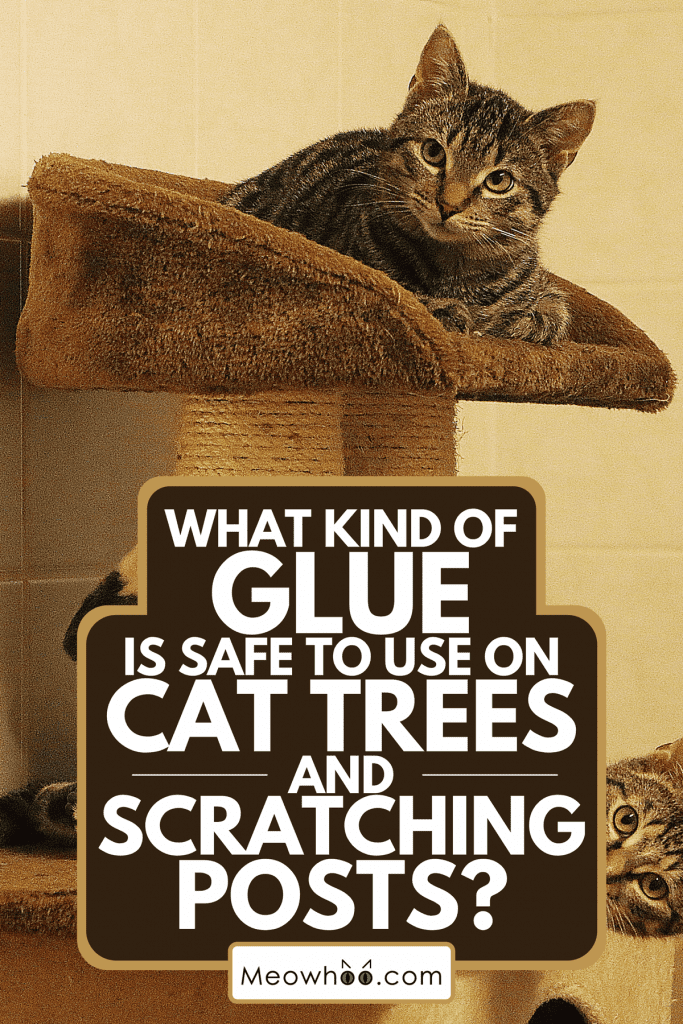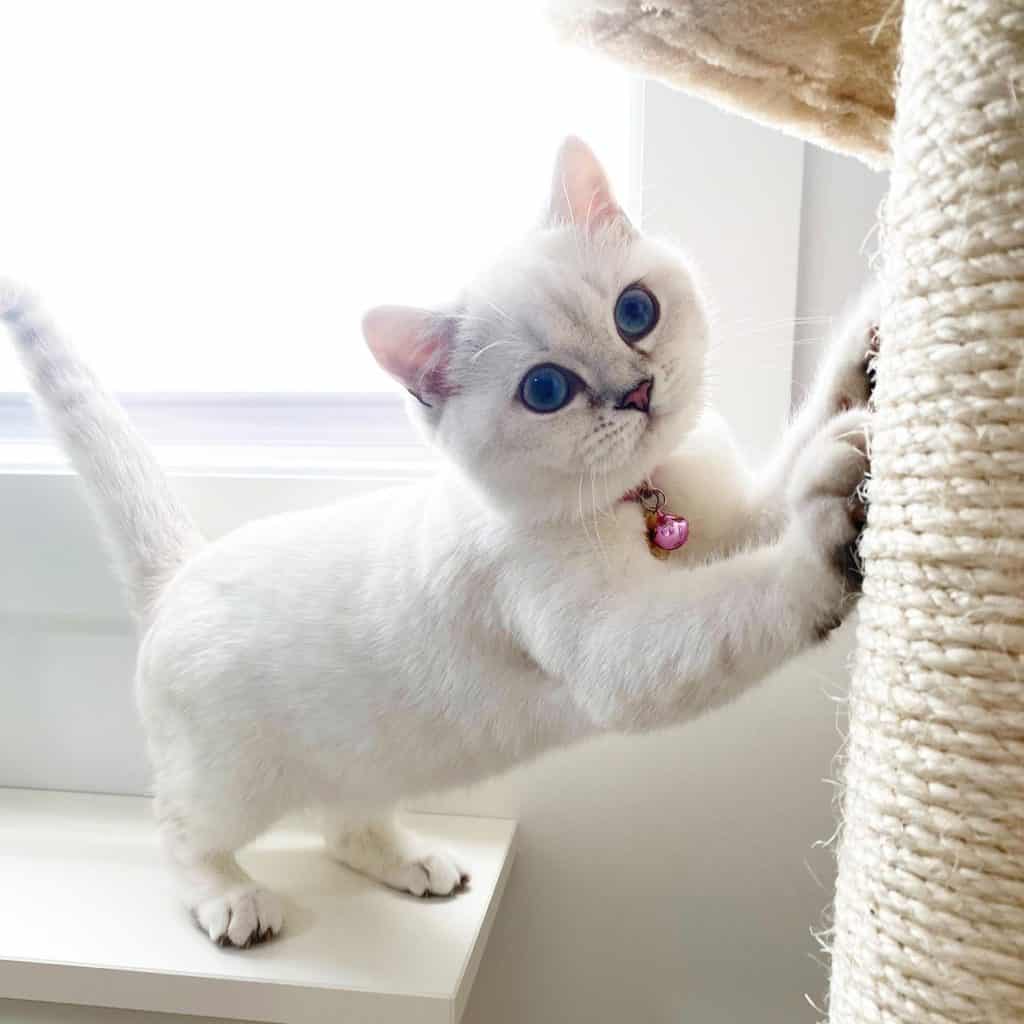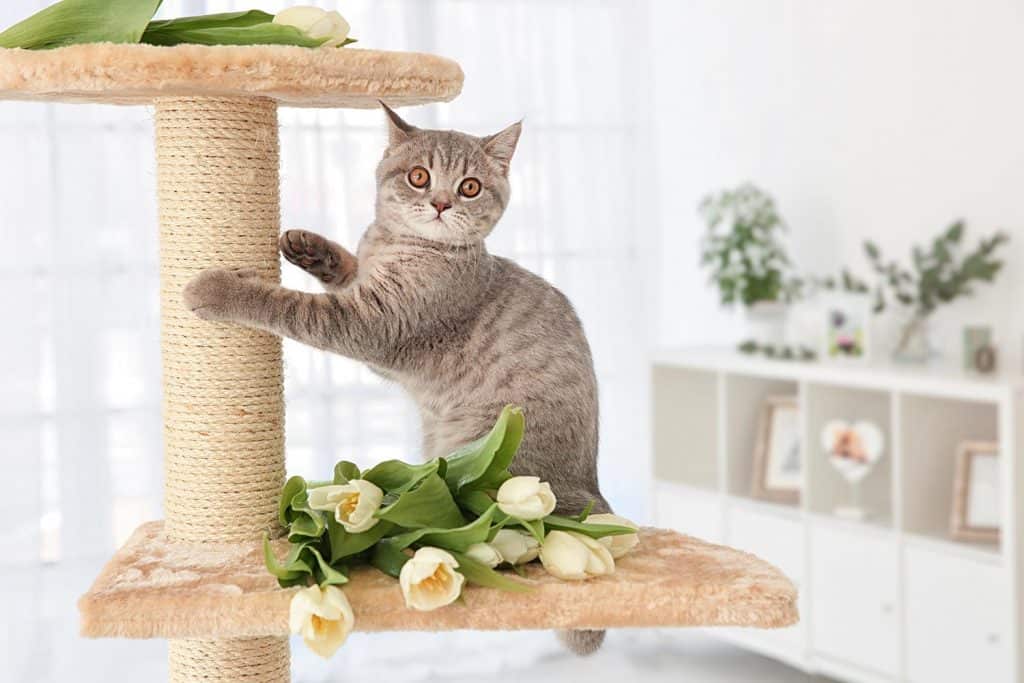A frayed scratching post may not be too attractive for your cats since they may not find it any longer satisfactory when they scratch with their claws. Rather than buying a new one, you can restore it yourself. But what type of glue will help your DIY route better? We looked into the question, and below are some of the answers we've gathered for you.
Go for hot glues and wood glues when fixing your cat trees and scratching posts. Examples include Elmer's Wood Glue (not the pro-bond type), Ecobond, and your friendly glue sticks with a "non-toxic" label. Avoid glues containing polyurethane and diphenylmethane diisocyanate (MDI), as these components can expand and lead to blockage when interacting with your cat's gastric system.
There are several types of glue to a commercial brand name, so it's essential to look at the ingredients. Continue reading, as we delve into some of the characteristics of adhesives that are safe to use for your pet projects.

Safe Glues For Cat Trees And Scratching Posts
Planning to restore a cat tree or a scratching post for your cats? We have listed here not only strong adhesives but glues that won't cause harm to your furry friends:
Elmer's Wood Glue
Mainly composed of polyvinyl acetate, Elmer's wood glue is used primarily in porous materials like wood, paper, or cloth. It is mainly safe due to its low toxicity potential and is similar to silicone adhesions and craft glues. It is generally rated as non-toxic, almost unassailable, and free of harmful fumes.
Click here to see this product on Amazon.
Is Elmer's Glue Bad For Cats?
Not all Elmer's Glue is bad for your cats. Only the Pro-bond type is harmful as it contains an active ingredient that can expand and obstruct your cat's digestive system when ingested. So make sure to look at the active ingredients before you decide to use this brand.
The preferred variant is wood glue. It can secure well without leaving potentially harmful residues for your cat.
Eco-Bond
It is a non-toxic super glue with low volatile organic components and does not contain polychlorinated biphenyls bearing almost any odor. It also bonds on wood, metal, glass, and other materials, including plastics and fabrics. It dries fast, can hold objects for hours without leaving any mess or fumes.
The brand can function as a replacement for all adhesives, silicones, and caulks.
Hot Glue Sticks
Hot glue sticks are mainly composed of polymers and additives, then formed into bars. The most commonly used polymers are ethylene-vinyl acetate (EVA), polyesters, polyethylene, and ethylene-methyl acrylate (EMA). Additives range from tackifying resins, waxes, plasticizers, and antioxidants.
Click here to see these non-toxic hot glue sticks on Amazon.
Is Hot Glue Cat Safe?
Most hot glues are non-toxic and can be applied with not many hazards attached to them. But one needs to be careful with the glue gun as melted glue may leak and cause accidental burns. Using it in closed spaces with little ventilation can also expose you to some fumes released as the glue stick melts.
So before using the glue gun, make sure to check for blocks from previous use. Inspect the cord if there is any detached insulation that can cause some electrical mishaps.
Also, always provide for catchment for small amounts of melted glue so that it does not stick everywhere. The catchment can also be your visual cue that something hot is potentially present.
What Happens If My Cat Eats Glue?
If your cat ingests glue, don't be scared since they do not poison them. However, the ingestion does not exclude them from getting some degree of discomfort ranging from mild symptoms to potentially severe effects, depending on the amount they ingest.
Most glues can cause GI upset or obstruction if ingested in large quantities. Incessant vomiting can be a sign of obstruction and needs immediate medical attention.
If you notice your cat behaving differently and glue ingestion is a suspect, it's best to take them over to your veterinarian for proper evaluation.
How Do You Fix A Sisal Wrap Scratching Post?

A severely frayed scratching post may make your cat lose interest. Not for any aesthetic reason but merely due to the lack of many areas to challenge their claws with. So when that happens, it's time to replace your sisal.
Hot glue is your best bet if you want to fix it fast and steady. Optional would be to use staple wires to secure the ends of the rope further. But again, if you bind your string tight to the pole and tie it with evenly spaced hot glue as you wind, it can also help secure well.
To begin fixing it, please follow the steps below:
- Remove the remnant of the clawed sisal wrap by cutting it with scissors or flaking them out. Clean remaining sisel that stuck to the scratching post.
- Work your way up by firmly attaching the initial part of your rope to the post using a generous amount of hot glue. You can opt to overlap the first layer of the string with the open end to reinforce further. You may use staple wires to hold the rope together to prevent it from slipping firmly.
- Apply hot glue to the sisal rope as you wind up the post. Place firm pressure on the cord as you wind it so that it attaches well to the base. This will also ensure that when your cat scratches, the rope will not become unclasped. Alternatively, you can use wood glue in the body of the post, but it may take longer to dry.
- When you reach the top of the post, snugly fit the end between the last layer of rope and the bottom part of the rest. Again, place a generous amount of glue to secure it tightly, or use your trusted staple wire instead.
The scratching post will be good as new and can readily be used as soon as you finish covering the post as hot glue sets fast. Make the wrap as tight as possible so that you maximize the sisal coverage.
If you used wood glue, leave some time for the adhesive to completely set before you reposition your cat's scratching post to its usual spot.
Make sure to place floor catchment covers when you're fixing the post so that no residues are left in the area. This may accidentally be ingested or stick to your cat's fur and may become ingested while your cat is grooming. So use the same precautions that you would use when you're fixing something for yourself.
For more info on scratching posts, read this post: 12 Types Of Scratching Posts And Scratchers
When Should I Replace My Cat Tree?

Cat trees are your cat's personal space in your entire house where they can be alone by themselves, lounge around, or play. Cat trees must remain stable, functional, and safe for your cats and the other members of the household.
A damaged cat tree or one that is sagging is enough to make you consider changing it. Another reason to change can be a smelly cat tree despite cleaning; a worn-out cover or flayed wrappings may warrant some DIYs even though the central skeleton remains intact. But overall, anything that compromises safety is a valid reason to change your tree.
Read more about cat trees here: 11 Types Of Cat Trees You Should Know
Is Gorilla Glue Safe For Cats?
Gorilla glue contains cyanoacrylate and, therefore, can cause some minor mishaps to your feline friend when ingested. The active ingredient, when it interacts with the gastric contents, expands several folds its size.
Depending on the amount consumed, the glue can cause blockage in the stomach or esophagus, depending on where the glue gets stuck.
The situation can cause some serious discomfort. This can range from mild symptoms such as vomiting, drooling, retching, and loss of appetite to as serious as possible cases that might need surgery when a lump causes severe obstruction.
In Closing
You need to always keep your cat's scratching posts and trees in pristine condition so that your pets don't scratch elsewhere. Apparent signs of fraying and loosely attached ropes or rugs are reminders that they need the upkeep soon.
Glues are suitable to use to keep the parts attached firmly but stay away from superglues—those that contain polyurethane and diphenylmethane diisocyanate (MDI).
If your cat ingests some glue bits, there is no need to panic. If you used the non-toxic glues, then the chances of falling sick will be pretty low. But in case you notice something odd or a little out of the ordinary, it would still be best to have your cat examined by a vet.
Some elements on this page may have been created by our team using advanced AI to provide you with top-notch cat inspired ideas. Read more about our AI Content Policy.


